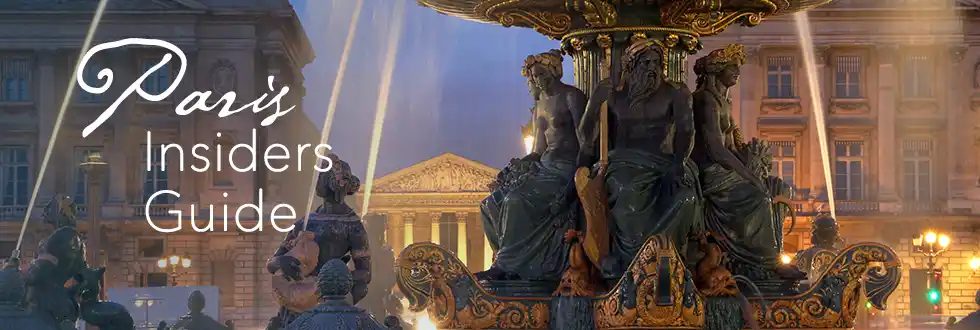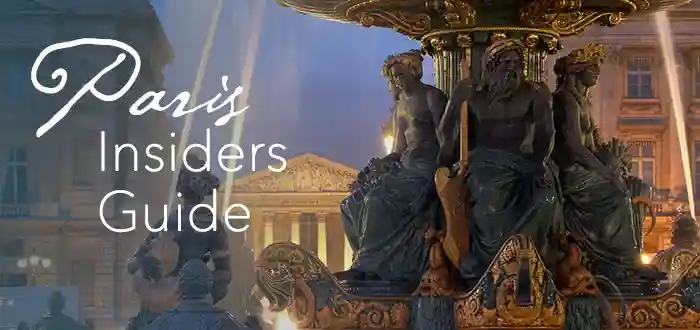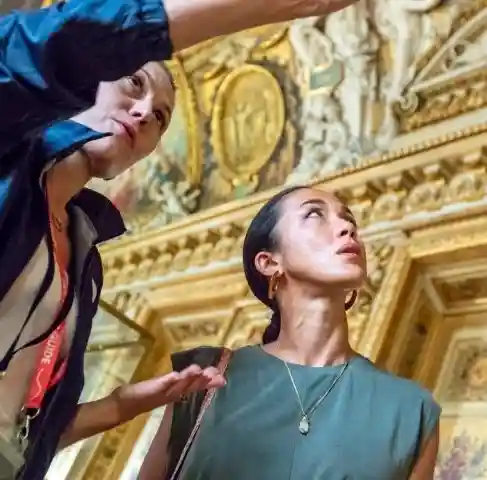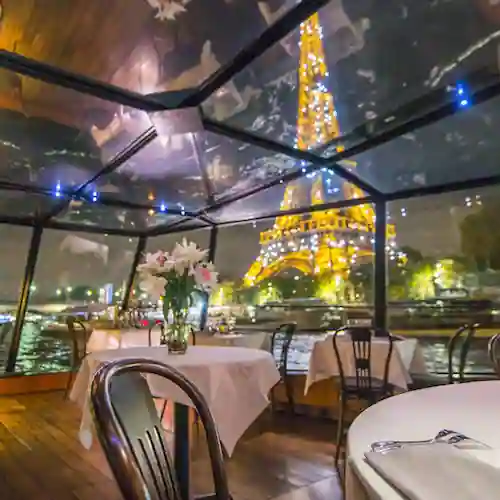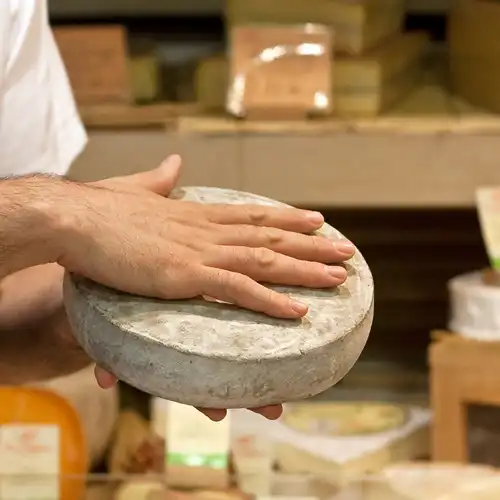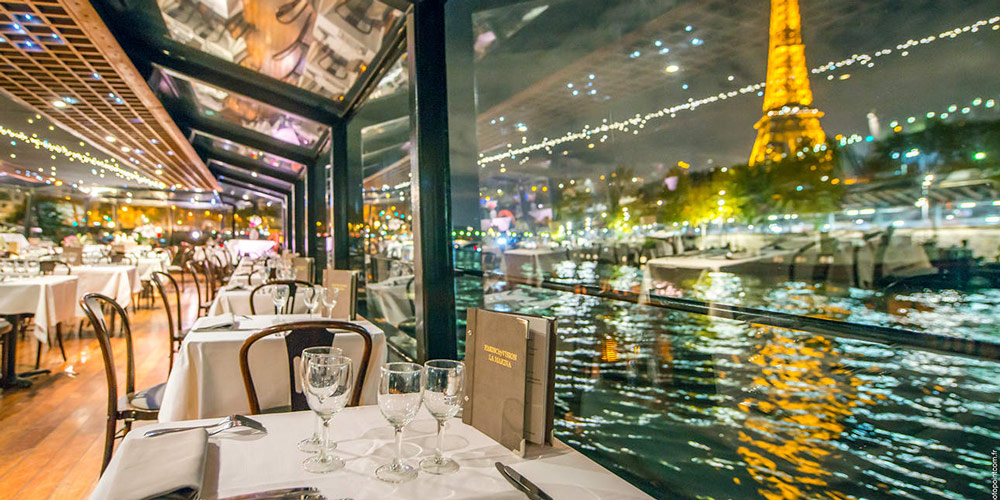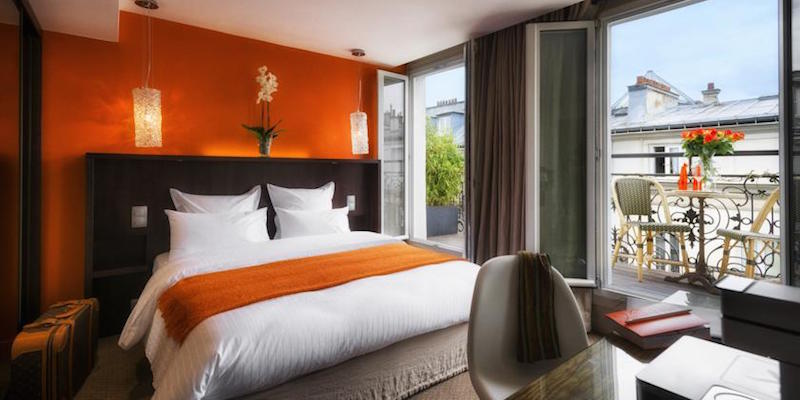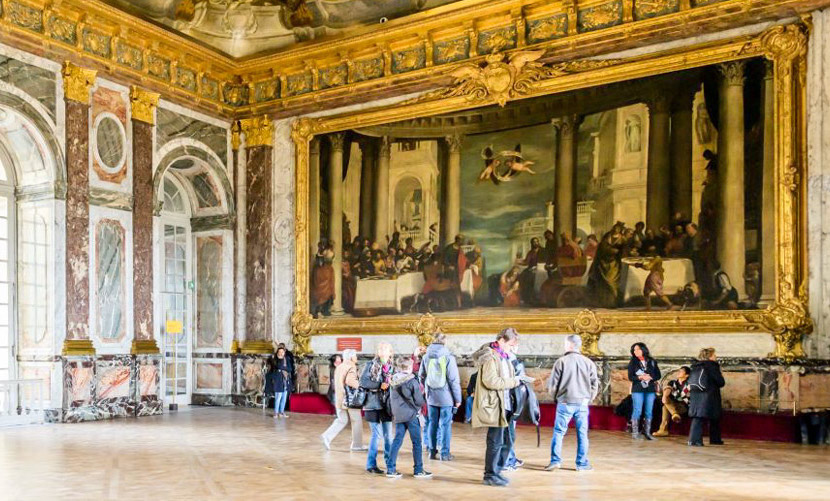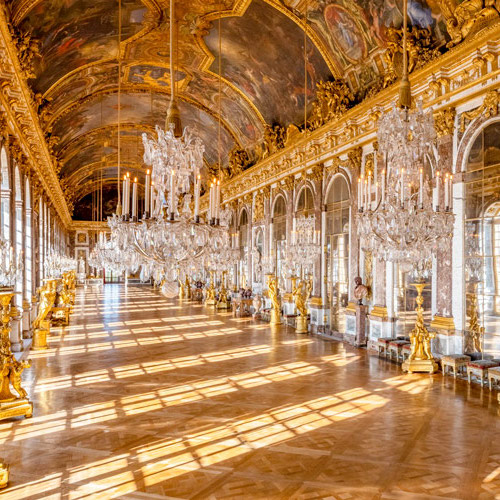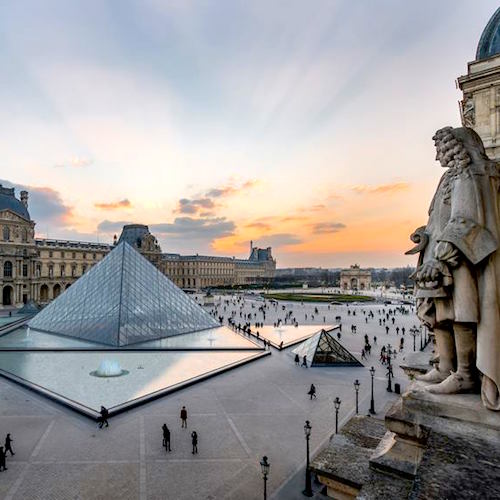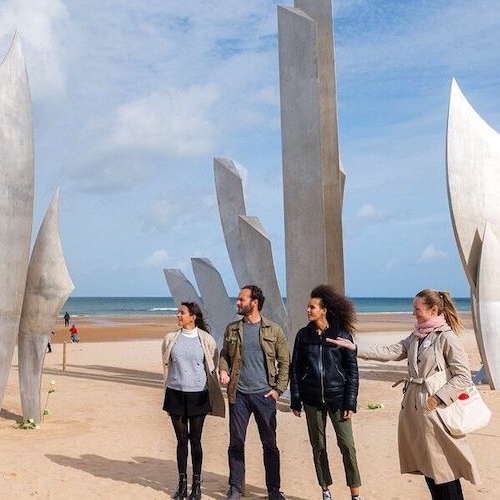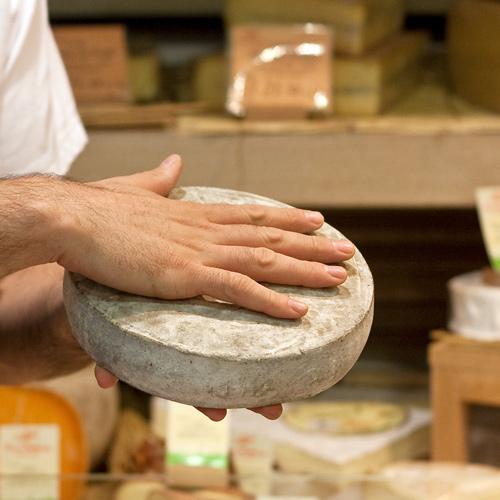Église Saint-Sulpice – History & Fountains In The Heart Of The Sixth
Église Saint-Sulpice – History & Fountains
Eglise Saint-Sulpice can be found in an unexpected but delightful open space in a busy quartier of the 6th Arrondissement, very near Jardin du Luxembourg. From Boulevard Saint-Germain you might find yourself window shopping along the narrow street named for the church, Rue Saint-Sulpice when suddenly, looming above you, is the back side of an enormous church.
![]()
Discover What's On When You're Here...
• January... |
• February... |
• March... |
• April... |
• May... |
• June... |
• July... |
• August... |
• September... |
• October... |
• November... |
• December... |
Discover What's On When You're Here
• January...
|
• February... |
• March... |
|---|---|---|
• April... |
• May... |
• June... |
• July... |
• August... |
• September... |
• October... |
• November... |
• December... |
The Towers of Saint-Sulpice
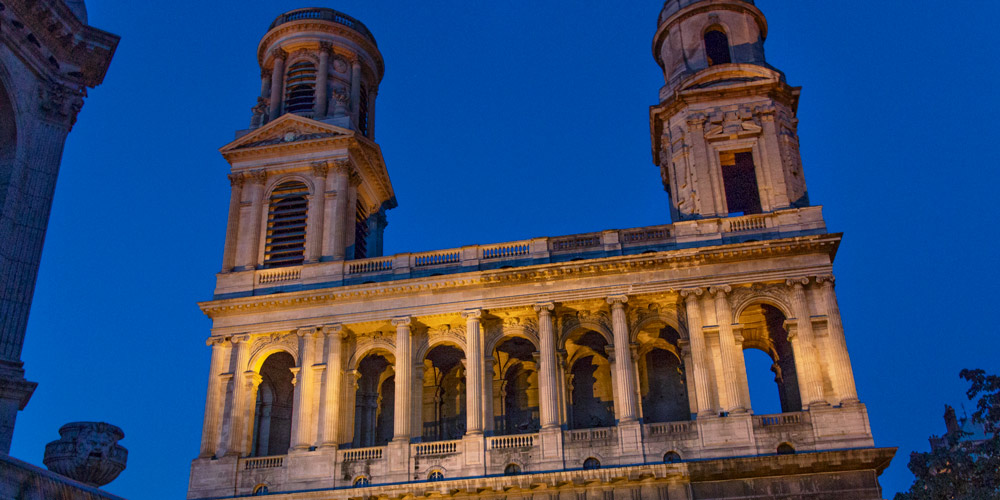 The towers of Eglise Saint-Sulpice at night, photo by Mark Craft
The towers of Eglise Saint-Sulpice at night, photo by Mark Craft
The rue narrows even more as you skirt the church until suddenly, wonderfully, the vista opens up onto a large place, bordered by chestnut trees, with one of most pleasing fountains in the city. You turn and look up at the mismatched towers of Saint-Sulpice. To learn more about this historic Left Bank neighborhood, read our guide to St-Germain-des-Prés. First, though, let's look back at the history of this looming building.
![]()
|
Paris Dinner Cruises on the Seine Dine in style as you glide past the Eiffel Tower, Notre-Dame, and the Louvre on a magical Seine River cruise. Gourmet food, champagne, and Paris lit up at night – it’s unforgettable. |
|
Paris Dinner Cruises on the Seine Dine in style as you glide past the Eiffel Tower, Notre-Dame, and the Louvre on a magical Seine River cruise. Gourmet food, champagne, and Paris lit up at night – it’s unforgettable. |
A Parish Church for Peasants
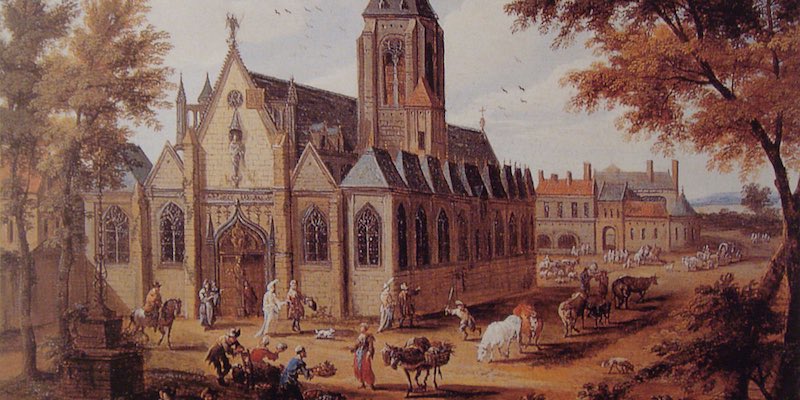 Eglise Saint-Sulpice in the 17th century
Eglise Saint-Sulpice in the 17th century
There's been a church here since the 13th century, when this part of Paris was more open fields than buildings. At that time the abbot of the nearby monastery and church of Saint-Germain-des-Prés had another church built for the peasants living on its lands, shown in the picture above. (Just to give historical perspective, today it's only a 5-minute walk between the two churches.)
In the 17th century a new church was planned; this was the same era Jardin du Luxembourg was built. Like other Paris churches, construction took place over a long period — 224 years, to be exact — using a number of different architects. That's one of the reasons why Église Saint-Sulpice has those distinctive mismatched towers.
![]()
|
Browse our hand-picked Paris hotel deals with real-time discounts of up to 20%. Stay in the Marais, Saint Germain, the Latin Quarter, the Left Bank near the Eiffel Tower… every arrondissement is on the list. |
|
Browse our hand-picked Paris hotel deals with real-time discounts of up to 20%. Stay in the Marais, Saint Germain, the Latin Quarter, the Left Bank near the Eiffel Tower… every arrondissement is on the list. |
Église Saint-Sulpice
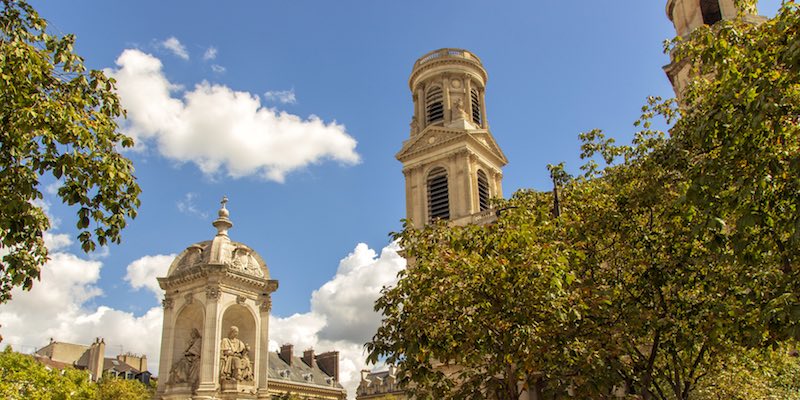 Eglise Saint-Sulpice fountain & towers, photo by Mark Craft
Eglise Saint-Sulpice fountain & towers, photo by Mark Craft
This pleasing church in the pleasing place has a number of claims to fame. It contains the largest fresco ever painted by Delacroix – Jacob Wrestling with the Angel. Appropriately, Delacroix himself wrestled with this painting for many years before he could finally complete it. The chapel that contains the painting is immediately to the right when you walk in. It's a bit dark in there, and the fresco is not well lit, but it's worth visiting.
The church also has an intriguing giant sundial, or gnomon, built right into the structure and casting its light on the tiled floor. The gnomon was installed in the 1720s to provide a more accurate means of determining the spring equinox and, hence, the date of Easter. The church's massive pipe organ was originally built by noted organ builder François-Henri Clicquot in 1758 and rebuilt 100 years later using the original materials.
The church became well known in the 2000s as a location in the book and film The Da Vinci Code. As it turns out, the filmmakers could not obtain permission to shoot inside the church, so they created a giant replica on a sound stage. Nonetheless, the book inspired more people to visit the church. Author Dan Brown took literary license by "discovering" that lines on the floor are the vestiges of a pagan temple.
This and other flights of fancy in The Da Vinci Code caused church authorities to erect a sign next to the gnomon that reads, in part —
"Contrary to fanciful allegations in a recent best-selling novel, this is not a vestige of a pagan temple. No such temple ever existed in this place…"
![]()
Experience The Left Bank Of Paris
|
Dinner & Cabaret at Paradis Latin Theater |
Chocolate & Pastry Walking Tour of Saint-Germain-des-Prés |
|
Chocolate & Pastry Walking Tour of Saint-Germain-des-Prés |
The Fountain on Place Saint-Sulpice
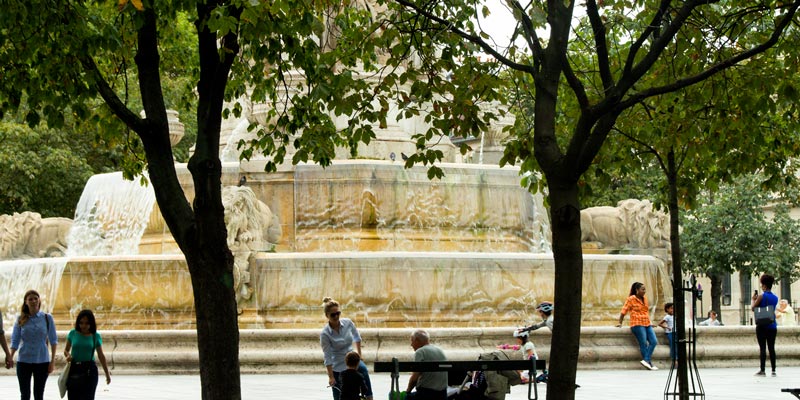 The huge fountain at Place Saint-Sulpice, photo by Mark Craft
The huge fountain at Place Saint-Sulpice, photo by Mark Craft
The 17th through 19th centuries were busy times of growth and construction in the Saint-Sulpice quartier. While work on the church groaned on (from 1646 to 1870) a garden was laid out in the place in front of the facade in 1754. It was originally planned that the place would be surrounded by matching buildings set in a semicircle, but this never came to pass.
![]()
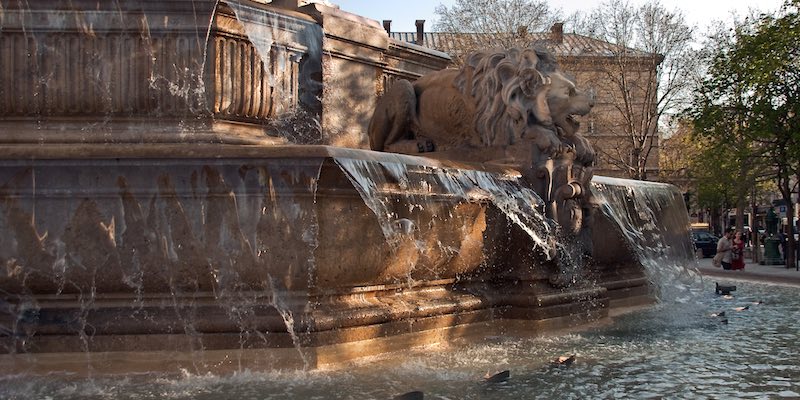 Fountain detail, photo by Mark Craft
Fountain detail, photo by Mark Craft
![]()
However, in the mid-1800s the current fountain was built, designed by Italian architect Joachim Visconti (who also did some work on the church facade). On the sides of the fountain are statues of bishops created by four different sculptors; they also represent the four cardinal points. It's one of the best fountains in the whole city — we're particularly fond of its lions.
![]()
Our Top-Rated Paris Experiences
Saint-Sulpice Resources
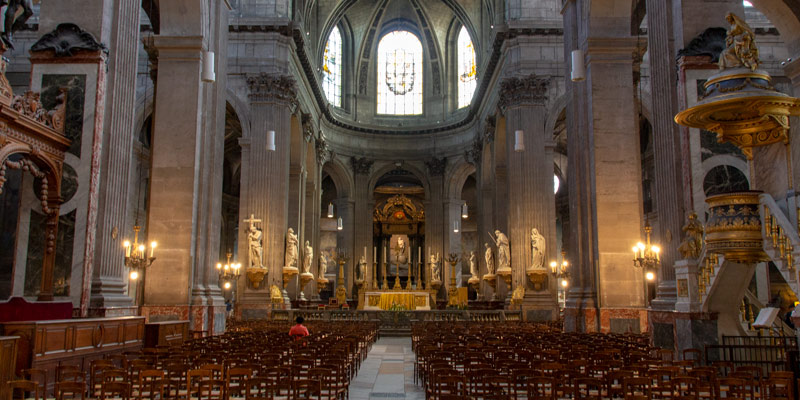 Eglise Saint-Sulpice interior, photo by Mark Craft
Eglise Saint-Sulpice interior, photo by Mark Craft
- Located at Rue Bonaparte & Rue Saint-Sulpice
- 6th Arrondissement
- Église Saint Sulpice is served by nearby Metro Saint-Sulpice on Line 4.
- In front of the church, across the place, is the lovely mairie, or town hall, of the 6th Arrondissement.
- More important (to us, at least), Pierre Hermé has a patisserie kitty-corner to the place on Rue Bonaparte.
Paris Planning Guides
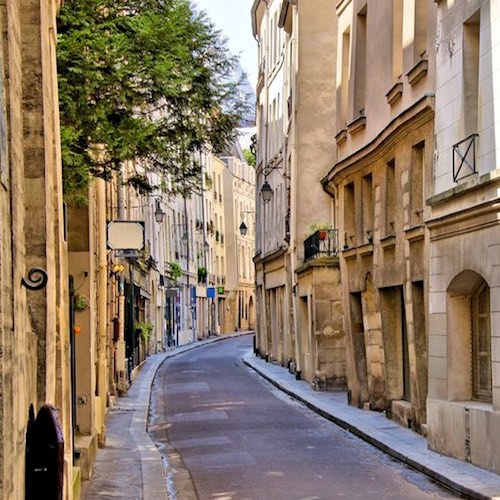 Latin Quarter Guide
Latin Quarter Guide |
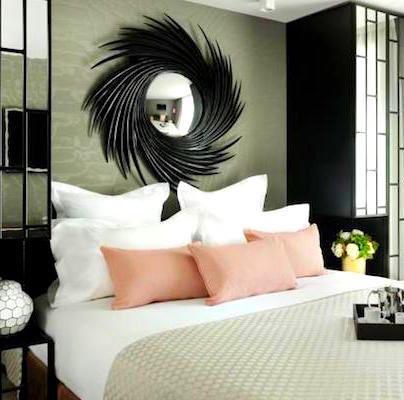 Latin Quarter Hotels
Latin Quarter Hotels |
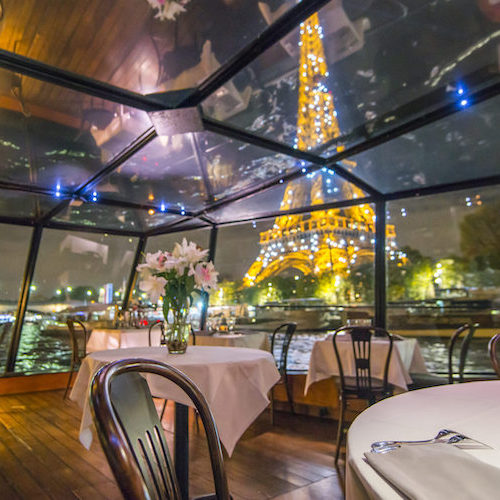 Glorious Dinner Cruises
Glorious Dinner Cruises |
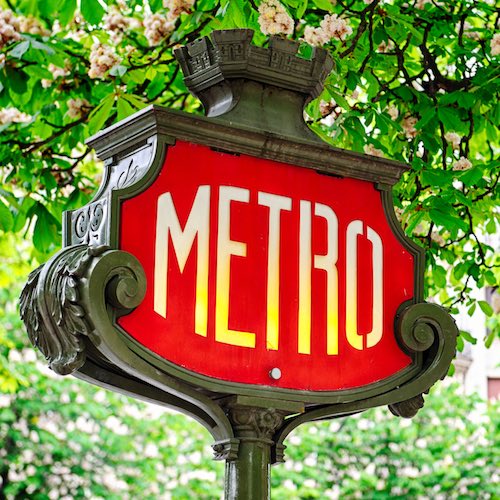 Paris Metro Guide
Paris Metro Guide |
